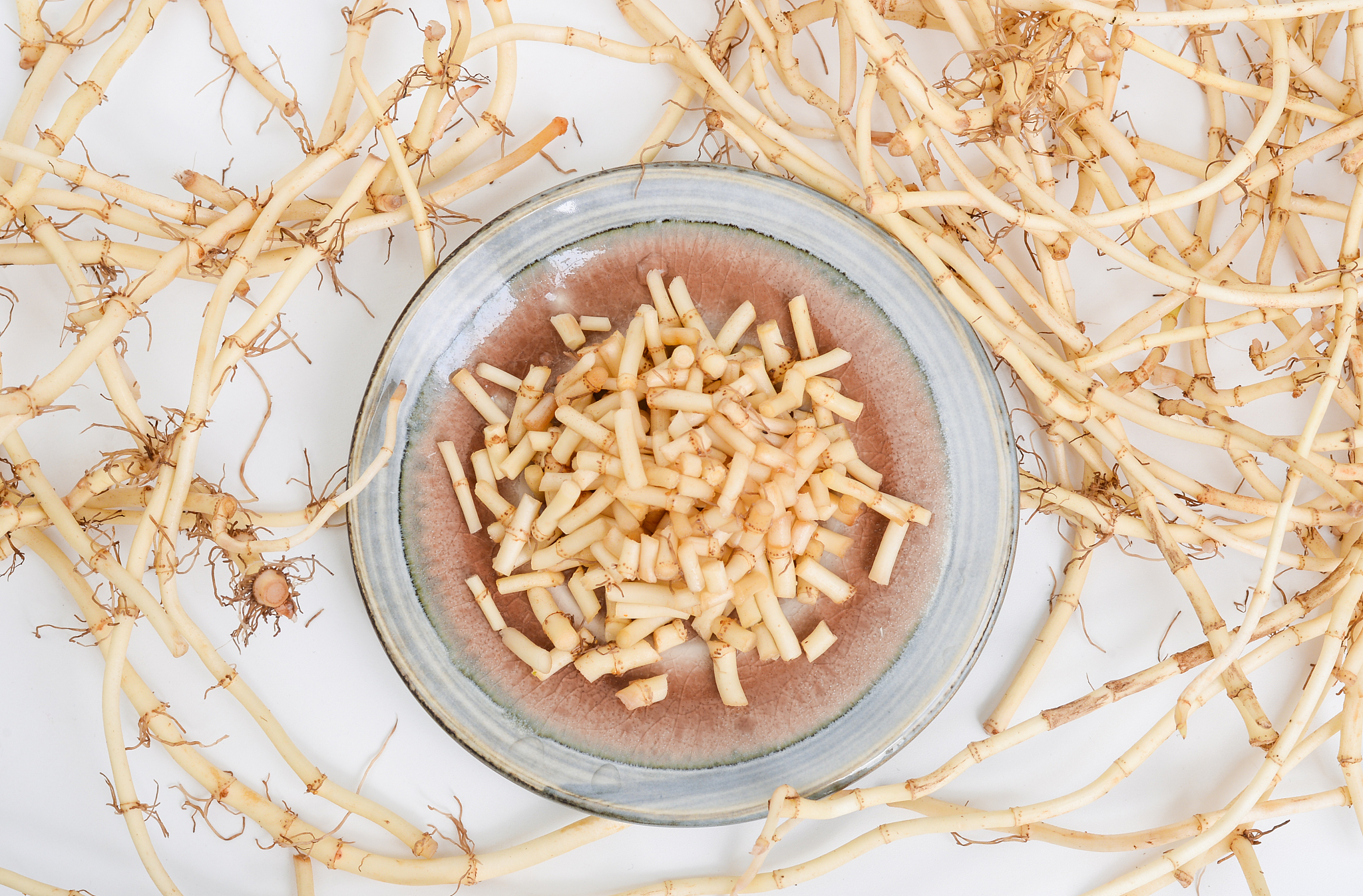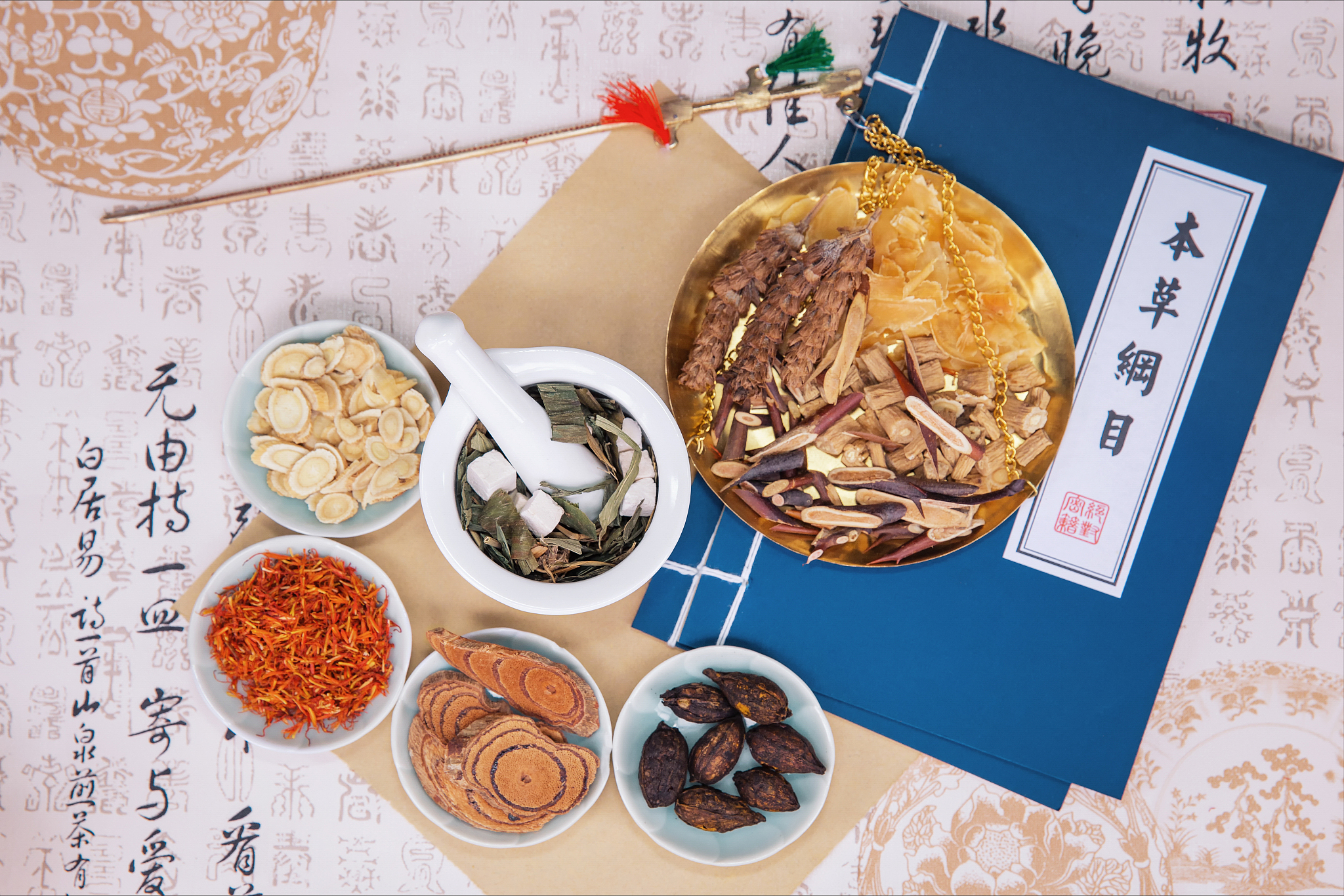Many poets have used fish mint, a herb used in traditional Chinese medicine (TCM) as well as some dishes, as a subject of their poems. In the poem "Yong Ji," written by the poet Wang Shipeng of the Southern Song Dynasty (1127-1279), he mentions a story about King Goujian of the State of Yue who ate fish mint to avoid starvation.
More than 2,000 years ago, the states of Wu and Yue were at war for many years. In 494 B.C., Fu Chai, king of the State of Wu, defeated Goujian, who became a prisoner of the king of Wu. After Goujian was released to his own state, he vowed to make his state stronger. But the first year of his return was marked by a rare famine. Goujian went up to look for edible herbs and found fish mint on Jishan Mountain in Shaoxing City, east China's Zhejiang Province today. Therefore, the people of the State of Yue managed to survive by relying on this herb. Finally, the State of Yue became stronger and defeated the State of Wu.

Although popular in southwestern areas, fish mint is one of the most controversial ingredients because of its strong taste. People who like it think it has a fragrance, while those who don't take it as an unpleasant taste. Stir-fried fish mint with sliced smoked pork and fish mint salad are two popular dishes in southwestern China.
Fish mint is not only used in making dishes, but also an important ingredient in TCM.
In "Compendium of Materia Medica," Li Shizhen names fish mint as "Yu Xing Cao" in Chinese, which means a "plant with fishy smell". He wrote that lingzhi mushrooms were mainly used for carbuncles, heat toxin, etc.
According to the "Chinese Pharmacy Dictionary," it's clinically used in the treatment of ailments such as pneumonia, lung abscess, chronic tracheitis, whooping cough, suppurative arthritis, chronic cervicitis and so on.
The fresh whole plant or the dry fruiting bodies of the fish mint, with a spicy and cool taste, and a bit cool nature, are usually used as medicine.
Fish mint (Houttuynia Cordala) is in the genus Houttuynia. It is a flowering plant native to Southeast Asia. It likes warm and humid environment and grows near ditches, streams and under damp sparse forests. It is distributed in Chinese provinces of Shaanxi and Gansu and in the areas south of the Yangtze River basin.

About 'The Great Herbs' series:
Chinese herbal medicine is the precious legacy of the Chinese people's struggle against diseases for thousands of years and the essence of Chinese culture accumulated over thousands of years. The "Compendium of Materia Medica," written by Li Shizhen, is a valuable heritage of ancient Chinese medicine and botany, which has played a significant role in promoting the development of medicine and pharmacy in China and even the world. In this series, CGTN guides you through the journey of exploring the great herbs mentioned in the book.
For more:
The Great Herbs: The first of China's nine immortal herbs
The Great Herbs: The buster of blood
Chinese ground orchids help control rocky desertification in SW China
The Great Herbs: Flowers with two colors
The Great Herbs: The king of hundreds of herbs
The Great Herbs: Ancient 'mushroom of immortality' on rotten woods
(All images via VCG)
(If you want to contribute and have specific expertise, please contact us at nature@cgtn.com.)

